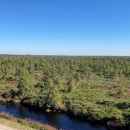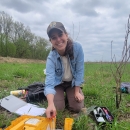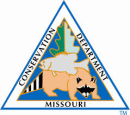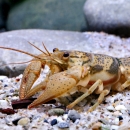Crayfish Conservation in Missouri
There are more than 600 species of crayfish in the world, and about 400 in North America. Invasive species are negatively impacting ecosystems across the world, including crayfish habit Our agency actively collaborates federal, state and non-governmental partners to study and protect these aquatic invertebrates. The full video series on crayfish conservation in Missouri
Beneath the surface: The importance of native crayfish
Crayfish play many roles in freshwater ecosystems and are a food source for more than 200 animals! Bob DiStefano (MDC) introduces us to crayfish, crawfish, crawdads and ditch crickets! Beneath the Surface: Audio described version.
Safeguarding Missouri rivers and streams
Removing animals from their natural habitat can negatively impact the environment. However, negative impacts also occur when pets are released into the wild Released pets can introduce unknown diseases, establish an invasive population and impact to native fishes. Bailey O’Brian (MDC) explains how removing crayfish from their native habitats can impact local ecosystems. Safeguarding Missouri river and streams: Audio described version
Protecting Missouri’s watersheds for native crayfish
Some species of crayfish are native to many states and can be found across several watersheds, while others are limited to small areas. Transporting and releasing crayfish can create a species invasion. For example, the red claw crayfish is native to southeast Missouri, but has been moved and is invading northern portions of the state. You can protect crayfish by not moving and releasing crayfish into new areas. Jacob Westhoff (USGS) and Bob DiStefano (MDC) discuss the adaptability of crayfishes and the potential impacts of species introductions. Protecting Missouri's watersheds for native crayfish: Audio described version
Unique life below the surface of the St. Francis River drainage
The Saint Francis River crayfish and the Big Creek crayfish have been affected by the invasive woodland crayfish, a native to nearby the Black River system, which has been competing with and eliminating these two native species. Bob DiStefano (MDC) shares unique conservation conundrum in the St. Francis River drainage in of Missouri. Unique life below the surface of the St. Francis River drainage: Audio described version
Collaborating for crayfish conservation
Our agency listed the Big Creek and St. Francis River crayfishes under the Endangered Species Act in 2023 because of the impacts of the invasive woodland crayfish. Trisha Crabill (USFWS) and Eric Lemons (USACE) explain the importance of partnerships to study, protect and recover wildlife. Collaborating for crayfish conservation: Audio described version
U.S. Fish and Wildlife Service
- Gabriela Wolf-Gonzalez
- Vona Kuczynska
- Kris Budd
- Trisha Crabill
- Brett Billings
- Ryan Hagerty
- Melissa Clark
- Melissa Gonzalez
Missouri Department of Conservation
- Bailey O’Brian
- Bob DiStefano
U.S. Geological Survey & The University of Missouri
U.S. Army Corps of Engineers
- Eric Limanen
Eric Lemons
Accessibility
Section 508 of the Rehabilitation Act of 1973, as amended (29 U.S.C. 794d), and 375 DM 8 requires The U.S. Fish and Wildlife Service to ensure that any Information of Communication Technology it develops, procures, uses or maintains is accessible to both Federal employees and members of the public with disabilities. These videos are included in a general playlist which will include accessible videos with closed captions and audio descriptions.








